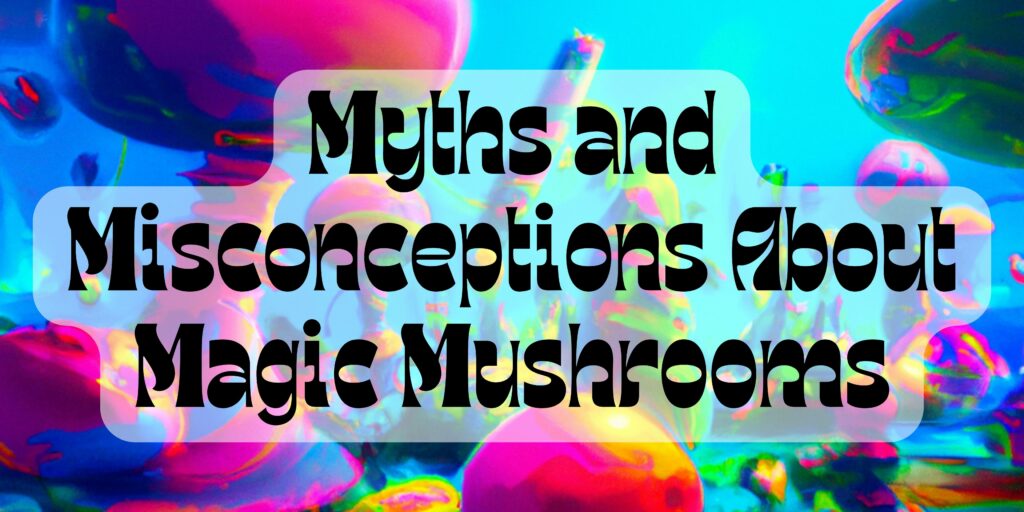Magic mushrooms, also known as psilocybin mushrooms, are a type of hallucinogenic drug that contains the naturally occurring psychoactive compound called psilocybin. When ingested, the effects of shrooms typically begin within 20 to 60 minutes and can last up to six hours. The onset time can vary depending on various factors such as dosage, individual metabolism, and method of consumption. Understanding when shrooms kick in is essential for those who are considering using them for recreational or therapeutic purposes.
Key Takeaways
- Shrooms usually take effect within 20 to 60 minutes of ingestion
- Duration of shroom effects can last up to six hours
- The onset time can be influenced by dosage, metabolism, and method of consumption
- Individual factors such as body mass and hydration levels can impact the onset time
- Understanding the potential risks and side effects of shroom use is important
Explore the science behind shroom onset time, factors affecting it, and the duration of a shroom trip in the following sections to gain a comprehensive understanding of magic mushroom use.
The Science Behind Shroom Onset Time
Psilocybin, the active compound in magic mushrooms, interacts with serotonin receptors in the brain, leading to altered perception, mood changes, and an expanded sense of consciousness. Once ingested, psilocybin is metabolized by the body and converted into psilocin. The effects of shrooms typically start within 20 to 60 minutes after ingestion. However, the onset time can be influenced by factors such as dosage, individual metabolism, and the method of consumption.
When it comes to the psilocybin onset time, dosage plays a significant role. Higher doses of shrooms may take longer to kick in compared to lower doses. This is because a higher dose means more psilocybin to metabolize, which can prolong the onset time. Additionally, individual metabolism also affects how quickly the effects of shrooms manifest. People with faster metabolisms tend to experience a faster onset time, while those with slower metabolisms may experience a delay.
The method of consumption can also impact the psilocybin onset time. If shrooms are ingested in their raw form, the onset time may be quicker compared to consuming them in tea or other prepared forms. This is because the body can absorb the active compounds more readily when the mushrooms are eaten raw. On the other hand, consuming shrooms in tea or other prepared forms may require additional time for digestion and absorption.
Overall, understanding the science behind shroom onset time can help individuals anticipate when the effects will kick in and plan their experience accordingly. By considering factors such as dosage, individual metabolism, and method of consumption, users can have a better understanding of how long it will take for shrooms to take effect.
Table: Factors Affecting Shroom Onset Time
| Factors | Effect on Onset Time |
|---|---|
| Dosage | Higher doses may lead to a longer onset time |
| Individual Metabolism | Fast metabolism can result in a faster onset time |
| Method of Consumption | Raw ingestion may lead to a quicker onset time compared to prepared forms |
Factors Affecting Shroom Onset Time
There are several factors that can influence the onset time of shrooms. These include dosage, frequency of use, individual metabolism, body mass, and hydration levels. Understanding how these variables can impact the time it takes for shrooms to take effect is important for those considering their use.
Dosage
The dosage of shrooms can play a role in determining the onset time. Higher doses may take longer to kick in compared to lower doses. It’s essential to start with a low dose and gradually increase if desired, as higher doses can have stronger and longer-lasting effects.
Frequency of Use
Regular users of shrooms may experience a slower onset time due to tolerance buildup. The body can become accustomed to the effects of psilocybin with repeated use, requiring higher doses or longer wait times for the desired effects to be felt.
Individual Metabolism
Individual metabolism can influence how quickly shrooms take effect. People with faster metabolisms tend to experience a faster onset time, as their bodies process and metabolize the psilocybin more efficiently.
Body Mass and Hydration Levels
Body mass and hydration levels can also impact the metabolism and absorption of psilocybin. Individuals with higher body mass may require a higher dosage or experience a longer onset time. Staying hydrated can help optimize metabolism and ensure proper absorption of the shrooms.
Understanding these factors can help individuals make informed decisions when using shrooms and manage their expectations regarding onset time. It’s important to approach shroom use responsibly and prioritize safety.
Understanding Shroom Trip Duration
Magic mushroom trips can vary in duration, with the effects typically lasting between 4 to 6 hours. During this time, users may experience heightened sensory perception, visual hallucinations, and shifts in mood and consciousness. It’s important to understand the trip duration of shrooms for those considering their use, whether for recreational or therapeutic purposes.
Factors such as dosage, individual sensitivity, and the type of mushroom consumed can influence the duration of a shroom trip. Higher doses often result in longer trips, while lower doses may provide a shorter duration of effects. Additionally, different strains of mushrooms can have varying potencies, impacting the trip duration.
To give you a better understanding of shroom trip duration, here is a table outlining the typical timeline of effects:
| Time | Effects |
|---|---|
| 0-60 minutes | Onset of effects, including changes in mood and perception |
| 1-3 hours | Peak effects, including intense visual hallucinations and altered consciousness |
| 4-6 hours | Gradual return to baseline, with diminishing effects |
It’s important to note that the trip duration can be influenced by individual factors, and experiences may vary from person to person. It’s recommended to start with a lower dose if you’re a beginner and gradually increase the dosage over time as you become more familiar with the effects.
Safety and Risks of Shroom Use
While shrooms are generally considered safe, it’s important to be aware of the potential risks and side effects associated with their use. Understanding these risks can help individuals make informed decisions and approach shroom use with caution.
Effects and Side Effects of Shrooms
When consumed, shrooms can induce a range of effects, including altered perception, enhanced sensory experiences, and shifts in mood and consciousness. However, it’s important to note that these effects can vary from person to person and may not always be positive.
Some individuals may experience anxiety, paranoia, or a distorted perception of reality while under the influence of shrooms. These effects can be particularly intense during a “bad trip,” which is characterized by overwhelming fear, confusion, and discomfort.
Other potential side effects of shroom use include impaired coordination or judgment, making activities such as driving dangerous while under the influence. Additionally, shrooms may exacerbate underlying mental health conditions and can lead to long-term effects such as flashbacks or hallucinogen persisting perception disorder (HPPD).
Mixing Shrooms with Other Substances
It’s important to avoid mixing shrooms with other substances, including alcohol and prescription medications. Combining shrooms with other drugs can lead to unpredictable and potentially dangerous effects, increasing the risk of negative interactions and adverse reactions.
Shrooms should also be avoided by individuals with certain medical conditions or a history of mental health disorders. It’s crucial to consult with a healthcare professional before using shrooms, especially if you have any pre-existing medical conditions or are taking medications.
Conclusion
Understanding when shrooms kick in is crucial for individuals using them for recreational or therapeutic purposes. The effects of shrooms typically start within 20 to 60 minutes after ingestion and can last up to six hours. Factors such as dosage, individual metabolism, and method of consumption can influence the onset time.
It’s important to be aware of the potential risks and side effects associated with shroom use and approach them with caution. While shrooms are generally considered safe, there are potential risks such as anxiety, distorted perception of reality, impaired coordination or judgment, and exacerbation of underlying mental health conditions.
By understanding the timing and effects of shrooms, individuals can have a safer and more enjoyable experience. It’s crucial to prioritize personal well-being and avoid mixing shrooms with other substances. Stay informed, take precautions, and always make informed decisions when exploring the potential benefits and risks of shroom use.
FAQ
When do shrooms kick in?
The effects of shrooms typically start within 20 to 60 minutes after ingestion.
What factors can influence the onset time of shrooms?
The onset time of shrooms can be influenced by factors such as dosage, individual metabolism, and the method of consumption.
How long do the effects of shrooms last?
On average, the effects of shrooms last between 4 to 6 hours.
Are there any risks or side effects associated with shroom use?
Yes, potential risks and side effects of shroom use may include anxiety, distorted perception of reality, flashbacks or hallucinogen persisting perception disorder (HPPD), impaired coordination or judgment, and exacerbation of underlying mental health conditions.
How can I have a safer shroom experience?
It’s important to approach shroom use with caution, be aware of the potential risks, avoid mixing shrooms with other substances, and ensure a comfortable and supportive environment.




